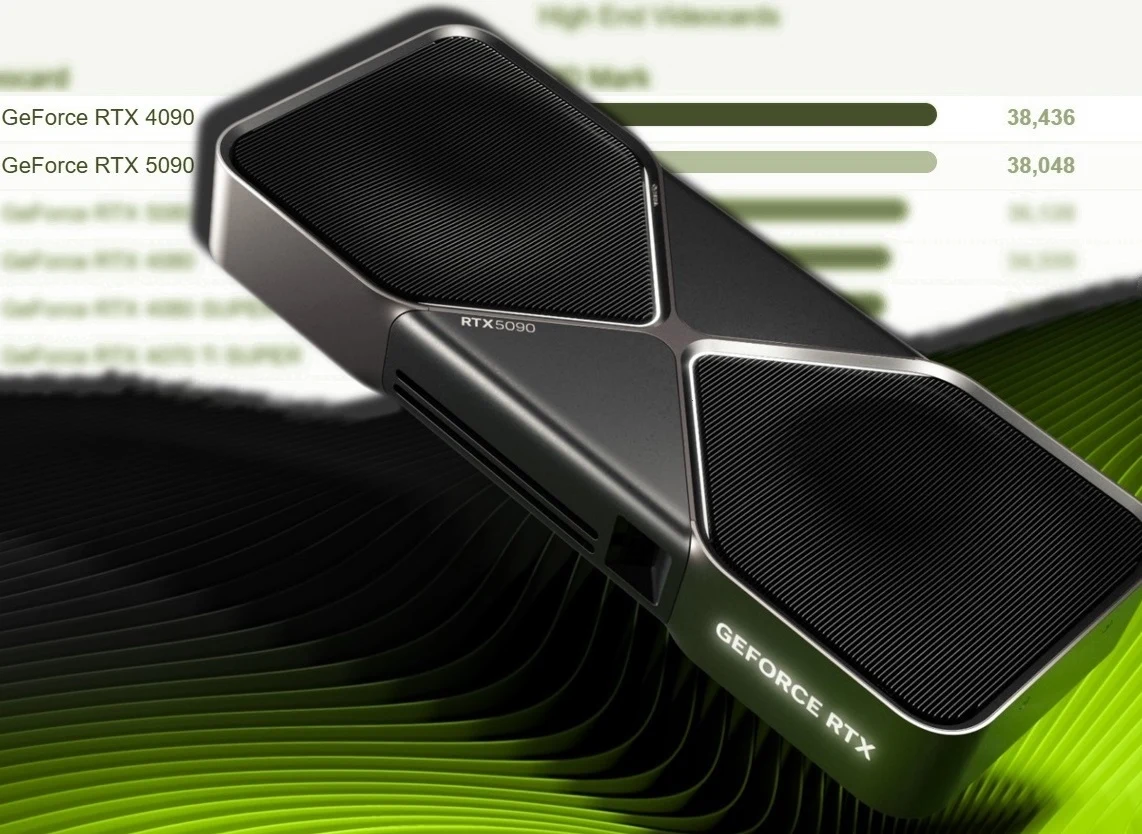Key Takeaways
1. The RTX 5090 has fallen to second place in PassMark’s G3D Mark benchmark, overtaken by the RTX 4090.
2. The average score for the RTX 4090 increased, while the RTX 5090’s average score decreased due to more extensive testing samples.
3. Possible reasons for the RTX 5090’s performance dip include driver issues, limited sample size, and missing Raster Output Pipelines (ROPs) in some models.
4. The RTX 5090 outperforms the RTX 4090 in DirectX 12 tests, showing a +39.3% advantage in average frames per second.
5. Despite having more CUDA cores, the RTX 5090 lags behind the RTX 4090 in GPU compute benchmarks by -17.5%.
As gamers anxiously anticipate the performance of the new Nvidia GeForce RTX 5070, the flagship RTX 5090 appears to be facing some challenges. After recently achieving the top position on PassMark’s G3D Mark benchmark list, the RTX 5090 has now fallen to second place, overtaken by the RTX 4090. Initially, the Blackwell card had a slight lead of +2.85% over the Ada Lovelace model, but further testing of both cards has eliminated that small edge.
Performance Shifts
Since our last update, a significant number of RTX 4090 graphics cards have been evaluated, leading to an increase in its average score from 38,422 to 38,436 based on 14,422 tests. Meanwhile, the testing pool for the GeForce RTX 5090 has expanded from 13 to 50 samples, causing its average score to drop from 39,516 to 38,048, resulting in a decrease of -3.71%. This fluctuation indicates that there remains a possibility for the RTX 5090 to regain its leading position in this benchmark if more samples are tested in the future. The tests conducted cover DirectX versions 9 to 12, along with GPU compute evaluations.
Possible Explanations
There are several reasons that might explain this surprising turn of events. Driver problems have been reported, with some RTX 5090 units allegedly malfunctioning post-software updates. The sample size for the Blackwell card is still relatively limited, particularly when compared to the RTX 4090. Additionally, it has come to light that certain GeForce RTX 5090 models were lacking Raster Output Pipelines (ROPs), which are crucial hardware components for image rendering. The limited availability of units will also influence the number of graphics cards eligible for benchmarking.
DirectX 12 Performance
It’s important to note that the RTX 5090 does outperform the RTX 4090 in DirectX 12 tests, boasting a significant advantage of +39.3% in average frames per second (209 vs. 150). However, as previously mentioned, the GeForce RTX 5090 lags in the GPU compute benchmark by -17.5%, even though it has +32.8% more CUDA cores than the RTX 4090, which are necessary for executing parallel processing tasks. While it’s too soon to claim that Nvidia is not keeping up, these results may give gamers pause when considering such a pricey piece of hardware.
Source:
Link




Leave a Reply